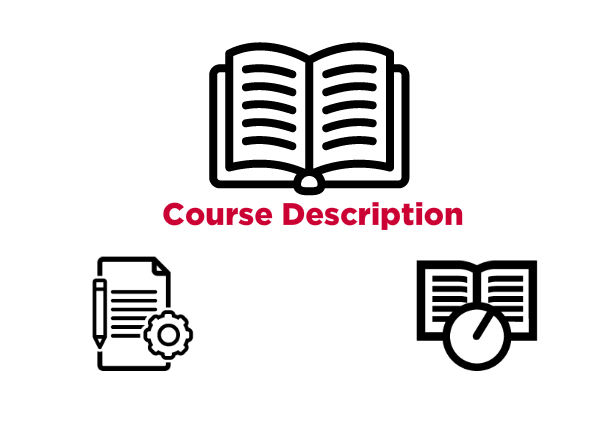In online education, transparency and clarity are essential to ensure students are fully prepared for their academic journey. Incorporating the official course description from a university's catalog into the syllabus is more than a requirement from the Higher Learning Commission. It is also a critical element that enhances the learning experience. Adding this information not only meets accreditation criteria but also provides a foundational understanding for students, which is vital for their success in the course.
The course description in the syllabus must contain an exact, word-for-word reproduction from the institution’s catalog. Ensure that the language remains the same. This requirement is designed to maintain consistency and accuracy in the information provided to students across educational platforms. Moreover, research indicates that course descriptions frequently serve as the main source of information about course content and significantly impact the early phases of the course selection process, which ideally involves confirming that a course is the appropriate choice for registration.
However, adhering to this standard does not restrict instructors from enhancing the course narrative with additional descriptions that are more relatable to students and reflective of the course's dynamic aspects. Instructors are encouraged to add supplementary descriptions that detail the course structure, activities and specific goals they aim to achieve. This approach not only caters to the official requirements but also personalizes the learning experience, making the course more engaging and comprehensible for students. For clarity and distinction, it is advisable to label the catalog description as the "official," "bulletin" or "catalog" description, based on the terminology used by the academic unit.
Where to find catalog course descriptions
- University catalog
- University SIS (MyZou) (student information systems)
Need for prerequisite/corequisite and credit hour information
In addition, please add information about the prerequisites or corequisites as well as the credit hours for the course. A clear articulation of this information in the syllabus ensures that students are adequately prepared before enrolling in the course. This is vital in online learning environments, where students are expected to manage their learning paths to a greater extent than in traditional classrooms. If there are no prerequisites or corequisites, stating this clearly prevents any confusion and helps students make informed decisions about their course load and scheduling.
Additionally, the rationale for these requirements is rooted in the necessity to orient students effectively to their courses. The syllabus should serve as a comprehensive guide that includes not just course descriptions but also details about the course delivery structure, class schedules, modes of communication and the technical support available. This extensive information package helps students navigate the online learning environment, which can be challenging without physical classroom cues and face-to-face interactions.
These detailed prerequisites and course descriptions are aligned with items #6 and #8e in the HLC 21st Century Distance Education Guidelines 2021, which emphasize the importance of student orientation and support services. By adhering to these guidelines, institutions not only comply with accreditation standards but also enhance the educational experience for students, ultimately leading to better outcomes and higher satisfaction rates.

Conclusion
The requirement to include a word-for-word course description from the university catalog plays a fundamental role in setting a standardized, transparent and robust foundation for student orientation and success in online courses. By coupling this with additional descriptive elements and support details, including prerequisite/corequisite and credit hour information, instructors can create an enriching and supportive educational environment that meets both accreditation standards and student needs.
Resources SYLLABUS TEMPLATES
A well-constructed syllabus goes hand in hand with a well-designed course. It also serves as a powerful tool to communicate your course expectations, set students on the right learning path and establish initial experiences for student success. Creating a well-constructed syllabus can be challenging. Visit the Syllabus Templates page to access the resources available for your campus.
References
Hai-Jew, S. (2010). An instructional design approach to updating an online course curriculum. Educause Quarterly, 33(4). https://er.educause.edu/articles/2010/12/an-instructional-design-approach-to-updating-an-online-course-curriculum
Hoffman, J., Eberhardt-Alstot, M., & Leafstedt, J. (2020). Orienting students to online learning: A must for student success. Educause Review.https://er.educause.edu/articles/2020/5/orienting-students-to-online-learning-a-must-for-student-success
Higher Learning Commission. (2020). HLC Policy – Policy title: Criteria for accreditation. Higher Learning Commission. https://www.hlcommission.org/Policies/criteria-and-core-components.html
Mourey, J. A., Markley, M. M., & Koernig, S. K. (2022). Dazzling Descriptions and Tantalizing Titles: How Simple Versus Complex Course Information Influences Course Selection. Journal of Marketing Education, 44(1), 100-112. https://doi.org/10.1177/02734753211017625

